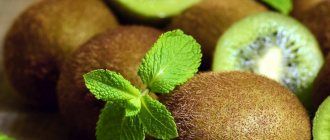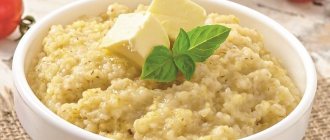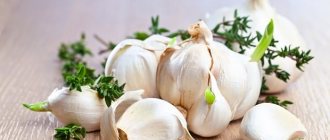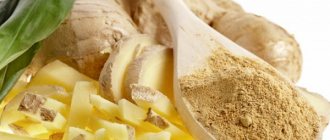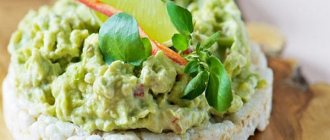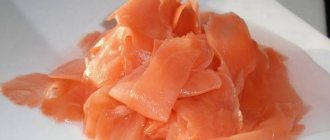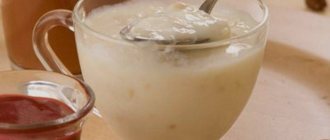How do they get it?
It all starts with catching fish. Pollock is mainly caught in the basins of the Okhotsk and Bering seas. High-quality caviar is produced in the Far East.
The fish are taken out of the water using huge seine nets. After that, it undergoes processing: it is cut up in factories. A large number of people are involved in the process. Roasters are removed from the carcasses - bags containing caviar inside. They then become raw materials that are subject to further processing.
The eggs are freed from the film in which they are located (this process is called punching). The pure product is then salted, packaged in jars and prepared for sale.
Composition and properties
Pollock caviar is rich in protein, while it is low in fat and practically no carbohydrates. This product has a rich vitamin and mineral composition. You can familiarize yourself with the table, which indicates the nutritional value, vitamins and elements contained in 100 g of salted caviar.
| Proteins (g) | Fat (g) | Carbohydrates (g) | Calorie content (kcal) | Vitamins | Elements |
| 28 | 2 | 1,1 | 120-140 | A, B1, B2, B6, B9, C, E, PP | Iron Potassium Calcium Magnesium Sodium Phosphorus Fluorine Sulfur Molybdenum |
Chemical composition
Perhaps in any store you can find canned pollock caviar on the shelves. The benefits and harms of this seafood will be similar to fish fillets. And in order to evaluate this, it is necessary to first study the chemical composition of pollock.
This fish is found mainly in Pacific and Atlantic waters. It is a cod fish and lives on the bottom. Pollock chooses small mollusks and plankton as its main food.
The vitamin and mineral composition of pollock fillet is pleasantly surprising, so it is difficult to doubt the enormous benefits of such fish.
Component composition of pollock:
- vitamin PP;
- retinol;
- calcium;
- molybdenum;
- ferrum;
- ascorbic acid;
- pyridoxine;
- chlorine;
- potassium;
- iodine;
- sodium;
- folic acid;
- riboflavin;
- vitamin B1.
In addition to the above macro- and microelements, vitamins, pollock is enriched with a number of acids, saturated, poly- and monounsaturated.
On a note! Cod fish contains high concentrations of selenium and iodine. This fish is an excellent source of protein.
As for the nutritional value of pollock, it is low and amounts to approximately 72 kilocalories. Of course, with heat treatment and the addition of additional ingredients, the calorie content may increase. Fried pollock caviar has the maximum energy value. It is approximately 112 kilocalories per 100 g of product.
Beneficial features
With this seafood, the human body receives Omega-3 polyunsaturated fatty acids, which it does not produce itself. They ensure normal blood flow in the vessels, and the platelets inside do not stick together. Omega-3 fatty acids are important for preventing heart attacks and strokes. In addition, they help remove bad cholesterol from the body and prevent its accumulation.
The product contains a significant amount of nicotinic acid (also known as vitamin PP). This substance helps prevent the development of pellagra, the so-called “three D” disease. Its symptoms are dermatitis (skin disease), diarrhea and dementia (mental decline). Vitamin PP is important for stabilizing blood supply to the brain.
Everyone needs phosphorus - both adults and children - to strengthen bones, and this element is also useful for the organs of vision.
Caviar also contains calcium, which is also important for healthy bones and teeth. The product also contains a lot of protein, which promotes the formation of new cells and tissues in the human body.
Nutritionists about the benefits and harms of pollock
It has long been known that fish is healthy. All nutritionists unanimously call for including it in your diet at least once a week. However, not every fish benefits the body. In our article we will talk about pollock. Are there any real benefits from using it? What is its calorie content? Can pollock cause harm to the body? The most important facts you need to know.
What kind of fish is this
Pollock belongs to the cod breed, which gives it the status of a valuable and nutritious fish.
And at the same time, importantly, it has a low calorie content. It is not for nothing that pollock was known already in ancient times. Today it is loved not only in Russia, but also in eastern countries, where it is often eaten every day. National dishes are prepared from pollock, seasoned with a variety of sauces and seasonings. Due to this, the fish often has a unique, exquisite taste. Pollock is found in the Pacific and Atlantic oceans, feeding mainly on plankton. It lives in cold water and can dive to a depth of more than seven hundred meters. During the spawning period, this fish comes close to the shore and sometimes gets caught with a simple fishing rod. But the most valuable thing during this period is, of course, caviar. It was very popular during the Soviet era, especially among those who could not get black caviar. However, even now, when there is no shortage, of all the “pollock” dishes, caviar is the most common on Russian tables.
Meanwhile, this type of food use of fish is far from the only one. In addition to pollock caviar, its fillet and liver are used in cooking. But no matter what form the fish is served, it is always distinguished by its low calorie content and excellent composition.
Pollock - for health and weight loss
For 100 grams of fish, the calorie content does not exceed 72 kcal. And its composition is truly royal:
- fats;
- proteins;
- “good” cholesterol;
- minerals;
- trace elements (potassium, iodine, phosphorus, fluorine, sulfur and cobalt);
- saturated fatty acids omega-6 and omega-3;
- vitamins B and K
The benefits of the composition are quite obvious: the body is strengthened, well-being improves, and metabolic processes are improved. The beneficial properties are, as they say, on the surface: pollock is the leader among fish in terms of protein, selenium and iodine content . Moreover, the fish has low-allergenic properties and is given to babies from 8 months. The benefits of pollock are invaluable for women during pregnancy and breastfeeding. Low calorie content and high nutritional value will be especially useful for older people. In addition, pollock is recommended to be consumed regularly when there is a lack of iodine.
Pollock and magnificent forms
When eating pollock, it is the low calorie content that allows you to quickly fill up and at the same time keep your shape. By regularly eating this fish, you can restore your slim figure and at the same time eat plenty and tasty. Of course, it is better to eat pollock with various side dishes that will “set off” its taste. Another advantage of this fish is its low price, and in times of crisis, you know, this is very important.
Pollock in cooking
The culinary industry has long included this fish in regular use.
Several types of products are produced from it: polzovred.ru>
Harm and contraindications
When canning, seafood is processed and becomes very salty. For this reason, doctors do not recommend eating it if you have chronic kidney disease or kidney failure. It is better not to eat it if you have urolithiasis, since it is important for patients to follow a diet with limited salt. Salted caviar is contraindicated for people with hypertension, those who have had heart attacks or have a predisposition to diseases of the cardiovascular system.
Expert opinion
Olga Nikolaeva
And, of course, in any form it is harmful for people with allergies to seafood and those with individual intolerance.
Main harm
Pollock caviar has no special contraindications, the only thing that doctors insist on is that people who have individual intolerance should not even try to eat the caviar product. People who have serious gastrointestinal diseases or high blood cholesterol levels should avoid eating caviar. Also, despite the pleasant taste and aroma, such caviar should not be consumed without acceptable reasonable standards; you simply cannot get carried away with it. There is no harm for pregnant women, for small children - use only with the approval of a doctor.
How to cook and serve?
Traditionally, this product plays the role of a snack that can be spread on bread or complement the taste of other dishes. According to the rules of serving, it is customary to place it on the table for guests in a special bowl - a caviar bowl.
For breakfast, you can prepare an original pasta with seafood, which can easily be used to make sandwiches. Here's her recipe.
Ingredients for 2 servings:
- pollock caviar – 2 tbsp. l.;
- butter – 50 g;
- lemon juice - to taste;
- dill, parsley, cilantro - to taste;
- salt pepper.
How to cook:
- Chop the fresh herbs as finely as possible.
- Add 2 tbsp. l. pollock caviar and stir.
- Pour in a little lemon juice.
- Mix with soft butter.
- If necessary, adjust the taste with salt and pepper.
- Spread the paste on the bread.
- If desired, you can put thin slices of fresh cucumber and tomato on top.
The salty canned product is added to salads. They can be stuffed with olives, for example, and then placed as an addition to sliced fish. Fresh fish caviar is placed in soup or fried in the form of small flat cakes with flour and egg.
Recommendations from nutritionists for losing weight
Pollock is a low-fat fish that can become the main source of protein when losing weight. There are diets based on this product. It is able to speed up metabolism, get rid of factors that cause obesity: vitamin deficiency, digestive and intestinal disorders, slagging in the body, problems with the endocrine system.
Nutritionists recommend eating pollock 2-3 times a week. Fish should be boiled, baked, steamed without salt. The meal should be supplemented with fresh vegetables. You should not get carried away with mono-diets.
Benefits for children
Please note: caviar can be given to a child no earlier than 3 years old. This product may cause allergies and also contains a lot of salt.
But you can introduce your baby to fish much earlier: already at 8-9 months. Pollock is perfect for the first try, as it is a low-fat fish. But up to 10 months, the child’s diet should only include puree made from skinless fillet. To do this, boil the fish for a quarter of an hour, cool, then blend in a blender, removing the bones. You need to start with a quarter teaspoon, and then pay attention to the baby’s reaction. Sometimes allergies occur to a certain type of fish. If a skin rash or eating disorder occurs, you should temporarily stop introducing your child to pollock. But after a couple of weeks, after the condition has returned to normal, you can try another type of fish. If there was no negative reaction, you can give your child pollock a couple of times a week, and from 10 months you can offer the fish in the form of small pieces.
Pollock is rich in protein and also contains an amino acid called lysine, which is important for the growth of a child’s bones. Calcium and phosphorus, which are found in fish, are also beneficial for bones.
Pollock is also very useful for older children. Saltwater fish contains iodine, which helps maintain good memory, and Omega-3 fatty acids in fillets and caviar help brain function and promote the formation of new branches of nerve cells in the brain. This type of fish is also useful for the prevention and treatment of anemia.
Cod caviar: harm and benefit, properties. Cod caviar for pregnant women
Cod fish lives in the Atlantic Ocean and is caught in the waters of Norway, Great Britain, and Iceland. This “noble” individual is distinguished by dietary white meat and high nutritional value. In addition, the composition is represented by a huge list of valuable organic compounds, as are all its parts: liver, cod caviar.
The harm and benefits of this delicious treat - grains - have been worrying the minds of scientists for many years. Unfortunately, the product is inferior in popularity to salmon and sturgeon delicacies. Many people are simply not aware of the nutritional value of caviar. Thick, homogeneous consistency has a pleasant taste, melts in the mouth. It is used to prepare cold appetizers, sandwiches, and grains are also added to sauces and salads. In the skillful hands of a chef, the product turns into a real delicacy.
In what form is it exported?
On store shelves and market squares, the product is often sold frozen, smoked and salted, since it is perishable. At the same time, caviar does not lose its valuable properties. All minerals and vitamins remain unchanged. To increase shelf life, cod roe is canned. The benefits and harms of such a product are constantly discussed by nutritionists and doctors, since it contains salt, preservatives and a number of artificial colors are added to brighten the color.
Vitamin-mineral complex
Like all fish products, cod caviar and liver are rich in Omega-3 fatty acids, which are of significant value for our body. The composition is enriched with vitamins A, C, E, D, which prevent the development of vitamin deficiency.
A balanced set of elements has a beneficial effect on hair, epithelial tissue, and nails. Retinol deficiency provokes hair loss, brittle nail plates, and skin problems. All vitamins perform an important function in the body and are responsible for the normal functioning of internal organs.
What can we say about ascorbic acid, which increases the body's defenses and fights foreign agents. Cod caviar is rich in chemical micro- and macroelements. Benefit or harm is characterized by the incoming components. The presence of phosphorus, sodium, potassium, magnesium, zinc and calcium makes the product indispensable in a diet low in nutrients. As you know, poor nutrition negatively affects the functions of many systems.
By consuming the delicacy, you will get rid of bone fragility and stabilize the functioning of the nervous system. It is worth noting that caviar is enriched with protein compounds that are easily absorbed by the body. It is proteins that are responsible for the state of metabolism and metabolism. Lack of protein often leads to weight gain.
Cod caviar: health benefits
The product is not a panacea for physical pathologies, so completely relying on its strength and using it without restrictions is at least stupid. Our body needs a balanced source of nutrients, and when this balance is disrupted, our well-being worsens. Cod caviar, the harm and benefits of which depend on the method of preparation, has a positive effect on humans, but does not eliminate diseases.
This is a kind of preventive measure for maintaining health. Due to the presence of youth vitamins (A, E), it is used as cosmetic masks. Simple procedures enrich the skin, making it firm and elastic. In general, the fish delicacy is no worse than red and black caviar. Regular use prevents hormonal imbalance. Doctors say that the product has a positive effect on the hematopoietic system and the thyroid gland.
Cod caviar: benefits and harm for pregnant women
The diet of the expectant mother should contain several times more vitamins than usual, since the main part is spent on the development of the fetus. Many products are contraindicated during pregnancy and can have a harmful effect on the nascent body. So, is it possible to consume caviar or not?
According to scientists, the delicacy contains many valuable elements that are necessary for a pregnant woman, but also contains purines, which provoke the occurrence of kidney stones. In reasonable dosages it will not harm. It should be understood that cod caviar is broken, salted, the benefits and harms of which are contradictory, and can lead to swelling and water retention. There is definitely no need to abuse it. You should completely avoid the delicacy during lactation.
Restrictions on use
Even if we take into account the colossal value and balanced composition, consuming a fish product can cause a number of negative consequences: the deposition of stones, salts, and fluid retention. If such problems already exist, then it is advisable to exclude this delicacy from the menu. Doctors do not recommend using it for people with urolithiasis.
Caviar should be consumed in minimal quantities if you have hypertension and an excess of vitamin D. Salted cod caviar is contraindicated for people with excess weight, gastrointestinal disorders, as well as atherosclerosis and diabetes. Harm and benefit have repeatedly become the subject of dispute among doctors.
Energy value
Classical dietetics is not against fish products, as long as mayonnaise, salt and other harmful ingredients are not added to them. Moderate consumption will not increase body weight; on the contrary, it will satisfy the feeling of hunger for a long time. It's all about the high content of easily digestible protein compounds and the absence of carbohydrates. 100 grams of product contain no more than 180 kcal. It makes excellent cutlets steamed or in a slow cooker, rich soups and good salads. Can be mixed with olive oil and low-fat sour cream, seasoned with green onions and cilantro. Elegant, simple and tasteful!
How to choose?
The important point is to choose a quality product. Give preference to glass containers, through which you can see the appearance of the caviar. It is impossible to see the grains through the metal container; the only thing the buyer can do is shake the jar. The high-quality delicacy does not overflow and is tightly compacted into the container. The date of manufacture must be stamped on the jar.
The signs of quality are: pale yellow color, pleasant fishy aroma, salty taste, uniform grain size, absence of blood clots and film. The structure of the product is homogeneous, elastic, without signs of dryness. Pay attention to the composition. The manufacturer indicates the legal address of the production workshop, the availability of incoming ingredients, and the standards by which the product is manufactured (TU or GOST).
All types of seafood are stored only in the refrigerator. It is not forbidden to move it into plastic or glass containers and freeze it.
So we figured out why cod caviar is valued. The harm and benefits of a fish product depend on the amount eaten. A moderate dose, especially in boiled form, can be prescribed to babies in the first year of life.
fb.ru>
How to pickle at home?
If you happen to have eggs with pollock caviar at home, you can salt it yourself. For 500 g you will need:
- 2 tbsp. l. with a heap of salt;
- 1 l. water;
- 2 tsp. olive oil;
- pepper, cilantro, dried garlic and (or) other spices to taste.
To prepare the brine, pour salt into the water and put on fire. When the solution boils, hold for another minute and remove from heat.
While the water and salt are heating up, it is necessary to clean the eggs from the film. There are 2 ways to do this.
- Rub through a sieve. Imagine using it like a grater. Using the same movements as if you were grating spaghetti cheese, but not too quickly and carefully, separate the caviar from the film.
- Wait until the solution boils. Pour it into the jar. Stir for 5-7 seconds until the water completely covers all the eggs. Then, using a fork or whisk, continue stirring and remove the film, which should easily float to the surface on its own due to the high temperature.
If you use the first method, then after punching - this is the name of the process of getting rid of the film - you can fill the mass with a ready-made saline solution. Mix thoroughly and leave for 10 minutes to salt.
If you use the second method, remember that the time of salting the product in the solution should not be more than 10 minutes.
After the caviar has been salted, take a sieve and place gauze inside it. Place a container under the sieve. Strain the salted mass, stirring it until the water drains completely.
Leave to cool.
Place a teaspoon of olive oil in the prepared container. Then place the caviar mixture there and place a second spoon of oil on top. You can add spices. Afterwards, mix everything, close the lid, and put it in the refrigerator overnight.
The next morning the product can be eaten.
Is it possible to eat?
During pregnancy and breastfeeding
During pregnancy, especially in the first trimester, eating this seafood is beneficial. This is due to the fact that it contains vitamin B9 - folic acid, which helps the fetus to develop properly. Maintaining its normal amount in the body is important for the prevention of various pathologies associated with the development of the child’s nervous system.
Still, you shouldn’t get carried away with this product. Due to its high salt content, it can cause swelling. And, of course, before including it in the diet of the expectant mother, you need to check whether there are any contraindications for use, such as kidney disease, high blood pressure or allergic reactions.
When breastfeeding, you can start introducing caviar into the diet when the baby is six months old. This happens according to the standard scheme: first you need to eat a small portion and observe the child’s reaction for two days. If no allergic reaction occurs, you can continue to treat yourself to this seafood product from time to time.
During the diet
Pollock caviar is a dish with average calorie content. A couple of times a week in the amount of 100-150 g it can be safely introduced into the diet. Before you do this, check the composition: it should not contain additional ingredients other than the seafood itself and salt.
The presence of two preservatives is allowed - E200 and E211 - they help preserve the product. And be sure to once again pay attention to the calorie content indicated on the packaging.
For diabetes
Doctors' opinions are divided on whether caviar can be eaten if you have diabetes. In general, they agree that this is a prohibited product. But some experts believe that caviar can be consumed occasionally in minimal quantities. But only red.
We can conclude that pollock caviar should be excluded from the menu if you have diabetes. You can ask your doctor's opinion on this issue to get more accurate recommendations.
For gastritis and pancreatitis
It is not recommended to eat seafood with gastritis, especially when salted. In this case, it will need to be excluded from the diet.
For pancreatitis, this type of caviar is also on the list of prohibited foods, as it contains a lot of salt. Preservatives in caviar, which is sold in stores, also have an adverse effect on the inflamed pancreas.
Pollock caviar: benefits
Due to its rich chemical composition, which is based on a vitamin and mineral complex of natural origin, pollock caviar is characterized by a number of useful qualities, among which are:
- complete and easy digestibility of the product;
- inclusion in low-calorie diets if you want to lose extra pounds;
- strengthening the nervous system (due to the high sodium content);
- activation of brain activity;
- recovery of the body after taking an extra dose of alcohol;
- strengthening the immune system and increasing resistance to viral attacks;
- increasing the strength of muscle tissue;
- strengthening the skeletal system (therefore, small quantities can be given to school-age children);
- reduction of high blood pressure (and this despite the salt content);
- some reduction in the level of “bad” cholesterol in the blood (can become a product for the prevention of atherosclerosis);
- the ability, in tandem with other medications, to thin blood clots, preventing thrombophlebitis.
In cooking, it is used as an independent dish, as an additional component for sauces and salads. I would like to note for consumers of pollock caviar that the usefulness of such a product is no worse than black and red caviar delicacy.
By the way, read more on this topic: Royal salad with red caviar and squid
How to choose a quality product?
On the jars you can find the inscription: “Salted pollock caviar.” What does the word "breakdown" mean? The fact that it is cleared of the film in which it was located inside the fish.
The composition may also contain salt, oil and preservatives. Only two are allowed: E200 and E211. Without these additives, the product simply will not survive.
When choosing, you can try pressing on the lid of the jar. It should be pressed in tightly. If you hear a pop, this is a bad sign: the product inside has already begun to deteriorate.
It is better to choose seafood in transparent packaging. This way you can judge its quality by its appearance. The mass inside should have a light beige, slightly pinkish tint. It should have a moderately viscous consistency, lie tightly in the jar, not dangle or spread. The eggs inside should be visible.
How to store it correctly?
This product should be refrigerated according to the expiration date indicated on the package. After opening, the shelf life in the refrigerator is 36 hours.
Salted pollock caviar can be frozen. If you prepared it at home yourself, it is best to divide it into containers or jars in portions. It is important that the jar is completely filled and there is no air left in it. When you decide to take it out, you will need to defrost the product in the refrigerator for 24 hours. It cannot be re-frozen.
Please note: after freezing, caviar may lose its original appearance.
What are the benefits of caviar and liver?
Liver Features:
- The product is soft, delicate, 100 g contains 5 daily norms of vitamin A, 4 norms of omega-3 acids. More meat is saturated with iron, copper, manganese.
- Helps improve vision, get rid of anemia, strengthen bones, and prevent early aging.
But eating the product in unlimited quantities is dangerous. The daily norm is 20–30 g. When enlarged, pollock liver becomes dangerous to humans and causes harm rather than benefit. The disadvantage of liver is its caloric content and saturation with microelements and vitamins. Abuse provokes obesity, digestive disorders, and allergies.
Features, benefits and harms of pollock caviar:- The product is considered a delicacy. It has a pleasant taste, aroma, and light pink color.
- Superior to fish fillet in the amount of protein, concentration of vitamins and iron. Caviar can prevent vitamin deficiency, accelerate the relief of inflammatory processes, reduce the risk of colds, and improve the condition of the skin and hair.
- It is prepared with a lot of salt, so it should not be consumed uncontrollably. The daily norm is 25 g. When caviar is consumed in large quantities, edema and problems in the functioning of the cardiovascular system, kidneys and other internal organs caused by fluid retention may appear.
Liver and caviar can be bought ready-made canned. For example, products are sold under the trademarks “Santa Bremor”, “Okeanrybflot”, “Yuzhmorrybflot”, “Dobroflot”, “Dalmoreproduct”, “Avistron”, “Baltiysky Bereg”, “Delatika”. The entrails are also used to produce assorted delicacies.
Pollock caviar
Pollock liver, caviar and milt
Canned liver is prepared from frozen raw materials and freshly caught fish. They can be called “seaside style”, “natural”. The first type is a crushed product, the second is whole pieces.
Canned pollock innards are tasty and nutritious. But after cooking and long-term storage, there are no beneficial properties left in them. To create the products, caviar and liver are pasteurized. This destroys some of the vitamins. Also, at some enterprises, in order to fulfill the production plan and reduce costs, they deviate from GOST.
Violations affect the safety of canned food:
- Oxidative processes are activated. The product begins to taste bitter and becomes saturated with harmful compounds.
- The danger of harmful microorganisms entering canned food increases. In favorable conditions, bacteria multiply quickly.


